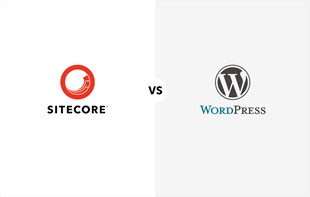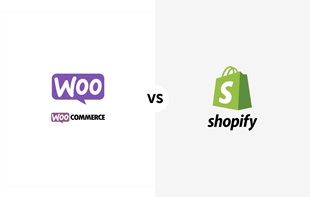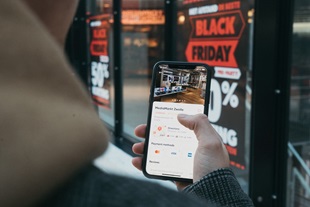7 Predictions for eCommerce in 2023
It’s 2023, and your customer doesn’t want to shop anymore, they want to experience. An increasingly demanding customer has meant that advancements in the world of eCommerce move at the speed of light. Whatever your brand, your eCommerce strategy now needs to be entirely integrated with other parts of your business. It should inform your marketing strategy as well as your eCommerce growth strategy as a whole.
So, the challenge for your brand is to stay ahead of eCommerce trends in 2023. We take a look at insight from across the eCommerce sphere to get some idea of how we can expect things to move forward.
eCommerce Predictions 2023
Let’s take a look at some of the top eCommerce predictions we can expect throughout 2023:
1. New Markets
International expansions will define eCommerce growth trends in 2023. The past couple of years have seen all of the major eCommerce players going all in to break the lucrative Chinese market. Luxury subscription service Le Tote, for example, soft-launched in China earlier a couple of years ago. With WeChat at the centre of its strategy. In 2023, the new market to move into for eCommerce brands will be India. As usual, this is a trend led by Amazon, which opened a fulfilment centre in Bhiwandi in 2013, followed by 40 more in 13 other states. This year, others will begin to follow suit.
Moving into a new market is, of course, not without its challenges. Retailers will need to find a way to work with prominent technologies, develop a localised pricing strategy, and an inventory and distribution strategy, and perhaps even find a way to offer one-day shipping. Many of the current trends in eCommerce will be centred around the goal of appealing to a new customer base.
2. Virtual Reality (VR) and Augmented Reality (AR) Will Become Mainstream
The use of VR and AR in eCommerce is expected to become mainstream.
VR offers an immersive, 3D shopping experience, while AR allows customers to visualise products in their own environment.
These technologies can help to bridge the gap between online and physical retail, providing a more engaging and interactive shopping experience.
IKEA, for example, has an AR app, IKEA Place, which allows users to visualise furniture in their homes. This helps customers make more informed purchase decisions and reduces the likelihood of returns.
If you want to implement VR and AR, here are some steps to consider:
- Choose the right technology - Decide between VR and AR based on your business needs and customer preferences. VR offers a more immersive experience, while AR is more accessible as it doesn't require special equipment.
- Create quality 3D models - Invest in creating high-quality 3D models of your products for use in VR or AR. These should be detailed and accurately represent your products.
- Educate customers - Make sure your customers understand how to use VR or AR features on your website. Provide clear instructions and consider incorporating a tutorial.
3. Visual Search
In eCommerce, traditional search functions have centred around typing keywords into a search bar. In comparison, visual search works by comparing the pixels in imagery to identify and return results that are similar to the image uploaded. In 2023, visual search functions will become a key part of the user journey. This is an important step up. Search becomes much more intuitive and aligns with the way that Millenials shop – using social platforms for product research and collecting images. Retailers, including Amazon, Target, and Neimann Marcus, are already there, with other brands to follow this year.
4. Sustainability Will Be a Major Factor
With increasing awareness of environmental issues, sustainability is expected to be a major factor in eCommerce.
Consumers are increasingly seeking out eco-friendly products and brands that demonstrate sustainable practices. Businesses that fail to consider sustainability in their operations and product offerings may risk losing customers to more eco-conscious competitors.
Brands like Patagonia are leading the way in sustainable eCommerce. They offer high-quality, eco-friendly products, provide detailed information about the environmental impact of their products, and are committed to fair trade practices.
Here are some tips on being more sustainable as an eCommerce brand and communicating this to your viewers:
- Offer eco-friendly products - Consider offering eco-friendly alternatives to traditional products. This could involve using sustainable materials, offering reusable products, or partnering with eco-conscious brands.
- Implement sustainable practices- Show your commitment to sustainability through your business practices. This could involve using renewable energy, minimising waste, or supporting fair trade.
- Communicate your commitment - Make sure your customers know about your commitment to sustainability. Highlight your eco-friendly products and sustainable practices on your website and in your marketing materials.
5. Content-Led Commerce & Commerce-Led Content

“We want to make our content better with commerce…so that we’re fully integrating products into the content.” – David Fischer, Founder of High Snobriety.
Following investment led by Felix Capital, esteemed streetwear publisher High Snobriety will begin putting an eCommerce strategy into place. This has long been a goal for all kinds of businesses across the industry, and we’ll see it continue to work both ways in 2023 – publishers finding ways to introduce product and commerce into their reader’s journey and brands trying to up their game with reputable editorial content.
The goal now is a seamless integration of the two. With the commercial landscape for big digital media brands becoming increasingly difficult to navigate, a foray into eCommerce represents a way to offset falling ad revenue. Customers are hungry for new products (with orders fulfilled ASAP), and readers are hungry for new, exciting content. Doing both (and finding a natural way to integrate the two) requires a huge amount of resources and collaboration across the business. This will be a central concern moving forward.
As a fashion creative agency, we work with brands to find a way to combine content and commerce seamlessly in their digital strategy. Find some of our work here.
6. Social Commerce Will Continue to Grow
Social commerce, the process of selling products directly through social media platforms, is expected to continue its rapid growth.
Social media platforms like Instagram and Facebook have integrated eCommerce features, allowing businesses to sell products directly through their social media profiles. This trend is driven by the increasing amount of time people spend on social media and the desire for a seamless shopping experience.
Many businesses, like Glossier, a cosmetics brand, have successfully leveraged social commerce. They have a strong presence on social media platforms like Instagram, where they engage with their audience, showcase their products, and even sell directly through the platform.
To capitalise on social commerce, you’ll need to:
- Leverage social media platforms - Make the most of the eCommerce features offered by social media platforms. This could involve selling products directly through your social media profiles, using shoppable posts, or leveraging social media ads.
- Engage with your audience - Use social media to engage with your audience. This could involve responding to comments, participating in discussions, or sharing user-generated content.
- Optimise for mobile - As most social media usage happens on mobile devices, make sure your website and checkout process are mobile-friendly.
7. Voice Technologies
The market for machine-learning applications is estimated to reach £209.91 billion by 2030, and it’s likely that many of those investments for brands will need to be in voice technologies. Statista predicts that there will be 8.4 billion units of digital voice assistants by 2024. Powered by voice assistants like Amazon’s Alexa and Google Assistant, brands will reach their consumers by building services or third-party “skills”. This is likely to mean that 2023 marks the beginning of the race to optimise your eCommerce for search, picking between one of the three technology teams while you’re at it.
Here are some tips to help you jump on the voice commerce trend:
- Optimise for voice search - Voice search queries are often longer and more conversational than text searches. Optimise your website and content to reflect this.
- Integrate with voice assistants - Consider integrating your eCommerce platform with voice assistants like Alexa or Siri. This will allow customers to search for products, place orders, and track deliveries using voice commands.
- Ensure website accessibility - Make sure your website is accessible for voice search. This means providing text alternatives for non-text content, ensuring easy navigation, and more.
Responsive Personalisation
It’s well established that personalisation in eCommerce is closely linked to retention, and automation opens up huge new possibilities when it comes to tailored online experiences. 2023 will see brands taking it a step further.
As AI and machine learning continue to evolve, personalisation in eCommerce is expected to reach new levels. Businesses will be able to offer a fully personalised shopping experience, tailoring not just product recommendations but also the entire website interface, content, and marketing messages to individual users. This will allow businesses to meet the unique needs of each customer and increase customer satisfaction and loyalty. eCommerce insights show that consumers are now expecting a personalised experience.
The latest brand to explore the new world of dynamic personalisation is L’Oreal Paris.
Their site adapts to users’ needs based on “how, why, and when they’re accessing the site” – in fact, it’s so personalised that no two users will receive the same experience. The idea is that the site listens to the user as they move through and adapts accordingly, adjusting the messaging and content that the visitor sees based on their behaviour. We can expect to see other ambitious brands following suit.
Here are some tips on implementing personalisation effectively:
- Collect and analyse data - Use tools like cookies and AI to collect and analyse customer data. This will help you understand your customers' preferences, behaviours, and buying patterns.
- Customise the user experience - Based on the data collected, tailor the user experience to individual customers. This could involve personalising product recommendations, content, and even the website interface.
- Personalise marketing messages - Personalise your email marketing, retargeting ads, and other marketing messages based on individual customer's behaviours and preferences.
Looking for more insight into the digital world from a leading eCommerce agency? We can help. Get in touch here to tell us about your eCommerce project.
Subscribe To Us







.jpg?mw=310)
























































































.jpg?mw=310)




















![10 latest trends in digital marketing for beauty brands [Part.2]](/-/media/Appnova/Blog/ScreenShot20151026at1500471940x567/10-latest-trends-in-digital-marketing-for-beauty-brands-Part-2.jpg?mw=310)
![10 latest trends in beauty web design and digital marketing [Part.1]](/-/media/Appnova/BannerImages/18376519151_bbeaa6dafc_b-1/trends-in-beauty-web-design-and-digital-marketing/10-latest-trends-in-beauty-web-design-and-digital-marketing-Part1.jpg?mw=310)
![From story-telling to story-showing: What makes a lifestyle eCommerce? [Part.2]](/-/media/Appnova/BannerImages/ScreenShot20150929at143416/From-story-telling-to-story-showing-What-makes-a-lifestyle-eCommerce-Part-2.jpg?mw=310)











![The generation of me, myself and I – Me-commerce will remain strong. [Infographic]](/-/media/Appnova/BannerImages/mecommerce-cover/mecommerce-cover/The-generation-of-me-myself-and-I--Mecommerce-will-remain-strong.jpg?mw=310)
![A Whole New E-commerce World – Alibaba and the forty others [Infographic]](/-/media/Appnova/BannerImages/camel/camel/A-Whole-New-E-commerce-World-Alibaba-and-the-forty-others.jpg?mw=310)







0.Comments